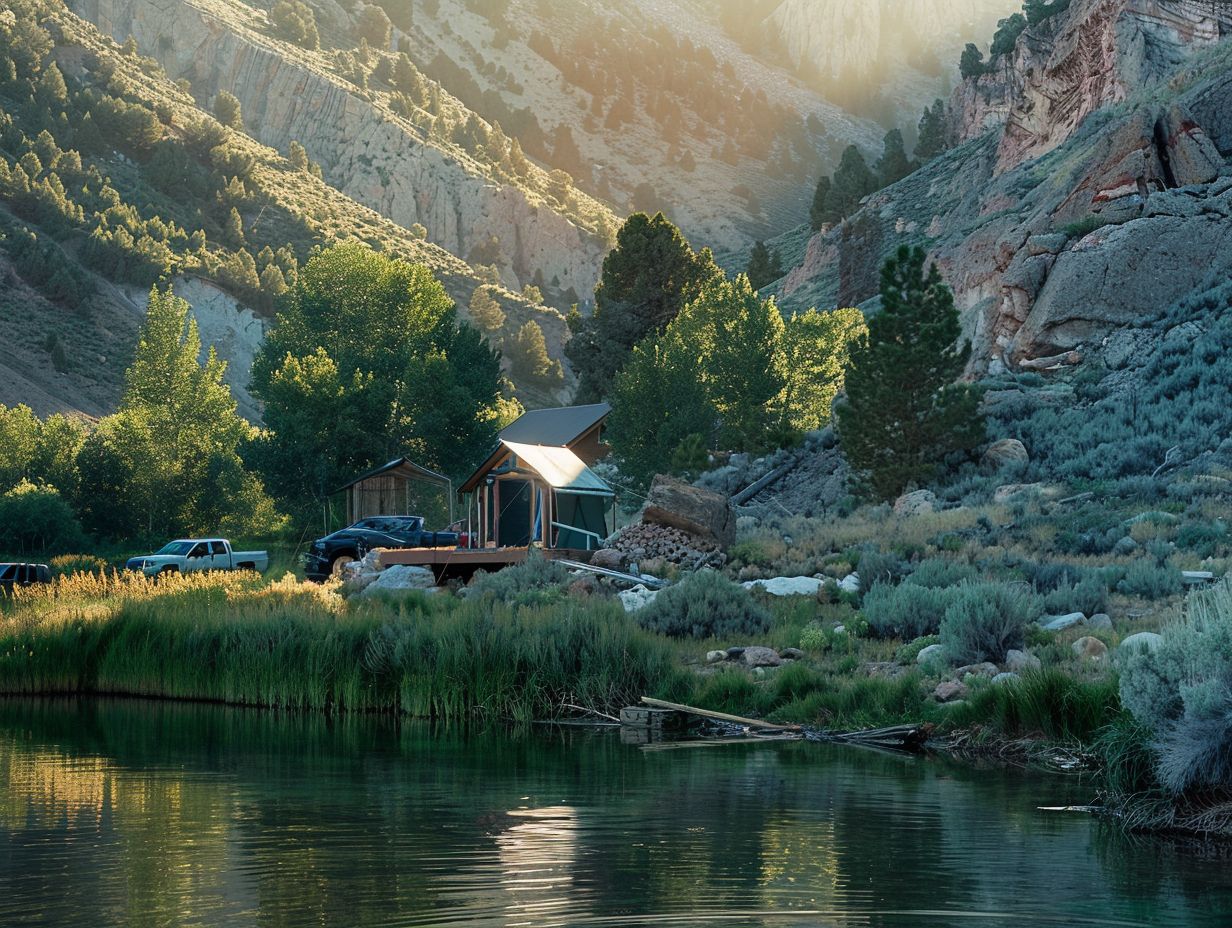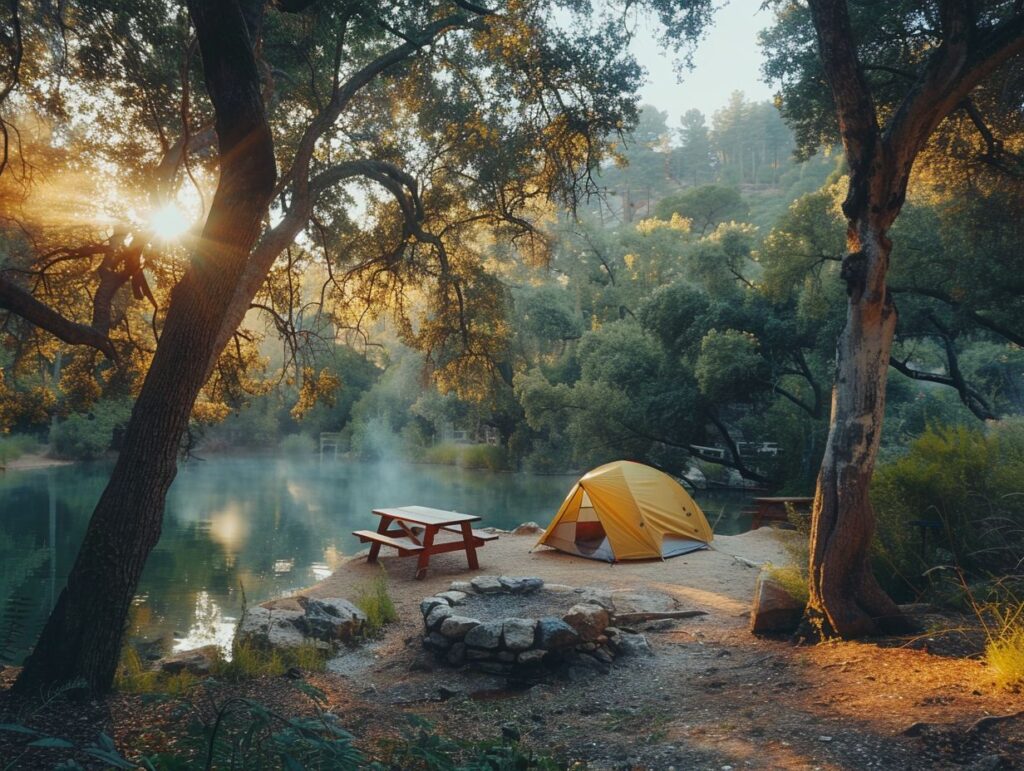Are you looking for a unique outdoor experience that combines relaxation, natural healing properties, and adventure? Camping near hot springs might be the perfect getaway for you.
We explore the benefits of camping near hot springs, things to consider before embarking on your trip, how to prepare for your adventure, the top hot springs camping spots in the US, and fun activities to enjoy while camping near these natural wonders.
Let’s dive in and discover the wonders of hot springs camping!
Key Takeaways:
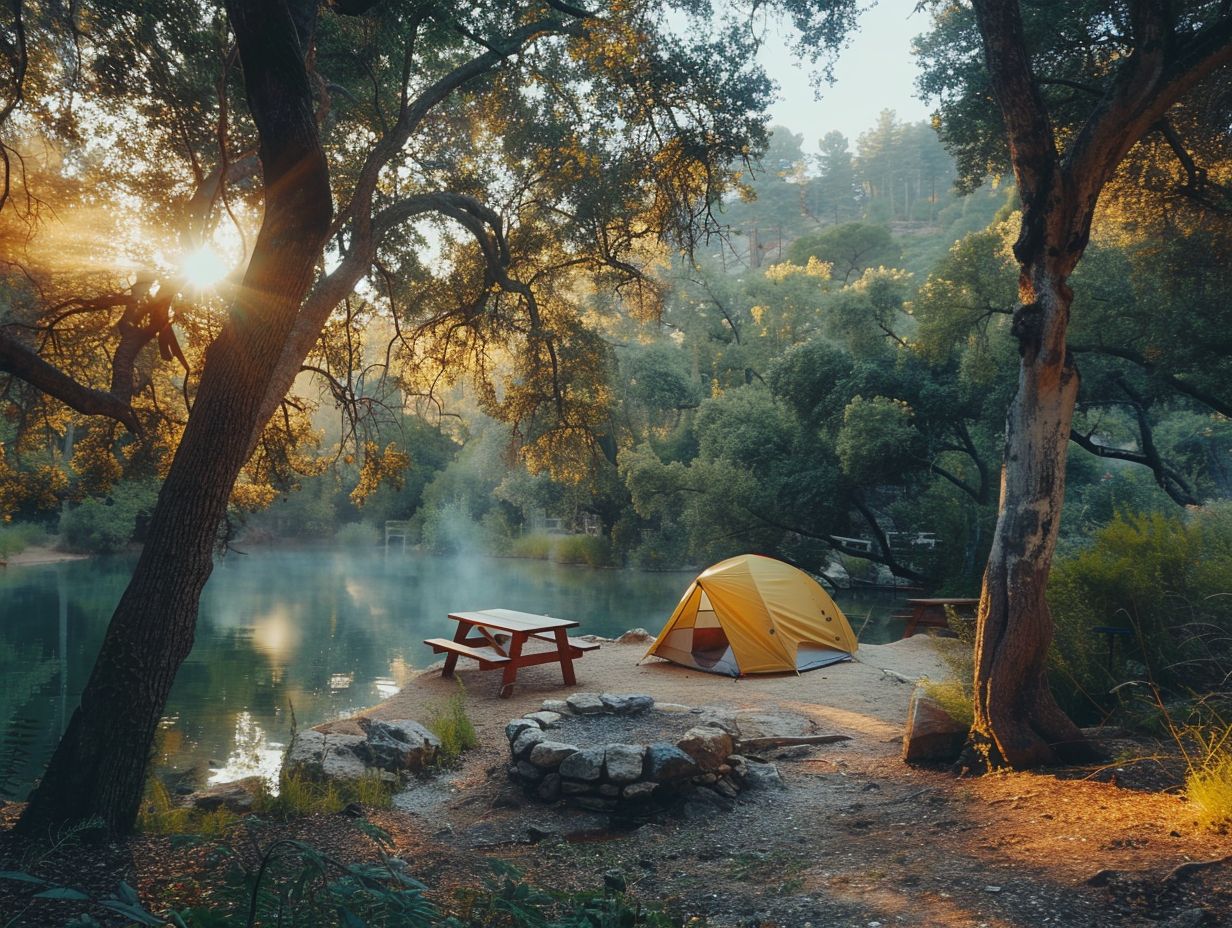
- Camping near hot springs provides relaxation, stress relief, and natural healing benefits.
- Consider accessibility, weather, and permits before planning a camping trip near hot springs.
- Proper packing, safety precautions, and following leave no trace principles are essential for a successful hot springs camping experience.
Things to Consider Before Camping Near Hot Springs
Before setting up camp in the vicinity of hot springs, it is essential to consider factors such as accessibility, location, prevailing weather conditions, as well as any necessary camping permits and regulatory requirements.
1. Accessibility and Location
Considerations regarding accessibility and location play a crucial role, especially when determining among RV parking, tent camping, or dispersed camping options.
When making a decision on a camping site, it is important to take into account your desired level of comfort and convenience. RV camping presents facilities such as running water and electricity, catering to individuals who appreciate modern conveniences.
Conversely, tent camping offers a more back-to-nature experience, allowing individuals to deeply immerse themselves in the natural surroundings.
Dispersed camping, while offering seclusion, may lack facilities but offers an authentic wilderness experience. It is advisable to reflect on the type of camping experience you seek and select a location that aligns with your camping preferences and comfort requirements.
2. Weather and Season
The weather and season are important factors to consider when planning a camping trip, regardless of whether you are planning to visit during the spring, summer, autumn, or winter.
Each season presents its own unique characteristics and challenges when it comes to camping. During the spring months, one may encounter unpredictable weather patterns, necessitating the inclusion of layered clothing in your packing list to ensure warmth and protection from moisture.
Summer, known for its longer days and higher temperatures, also brings along increased insect activity and potentially crowded camping grounds. The autumn season is distinguished by its picturesque foliage; however, campers should be prepared for cooler evenings by bringing additional blankets and appropriate clothing.
Winter camping demands specialised equipment tailored for snowy conditions, including a four-season tent and a sleeping bag capable of providing warmth in sub-zero temperatures.
It is advisable to always consult the weather forecast prior to embarking on any camping trip and make necessary preparations to ensure a safe and enjoyable experience, regardless of the season chosen for your outdoor adventure.
3. Camping Permits and Regulations
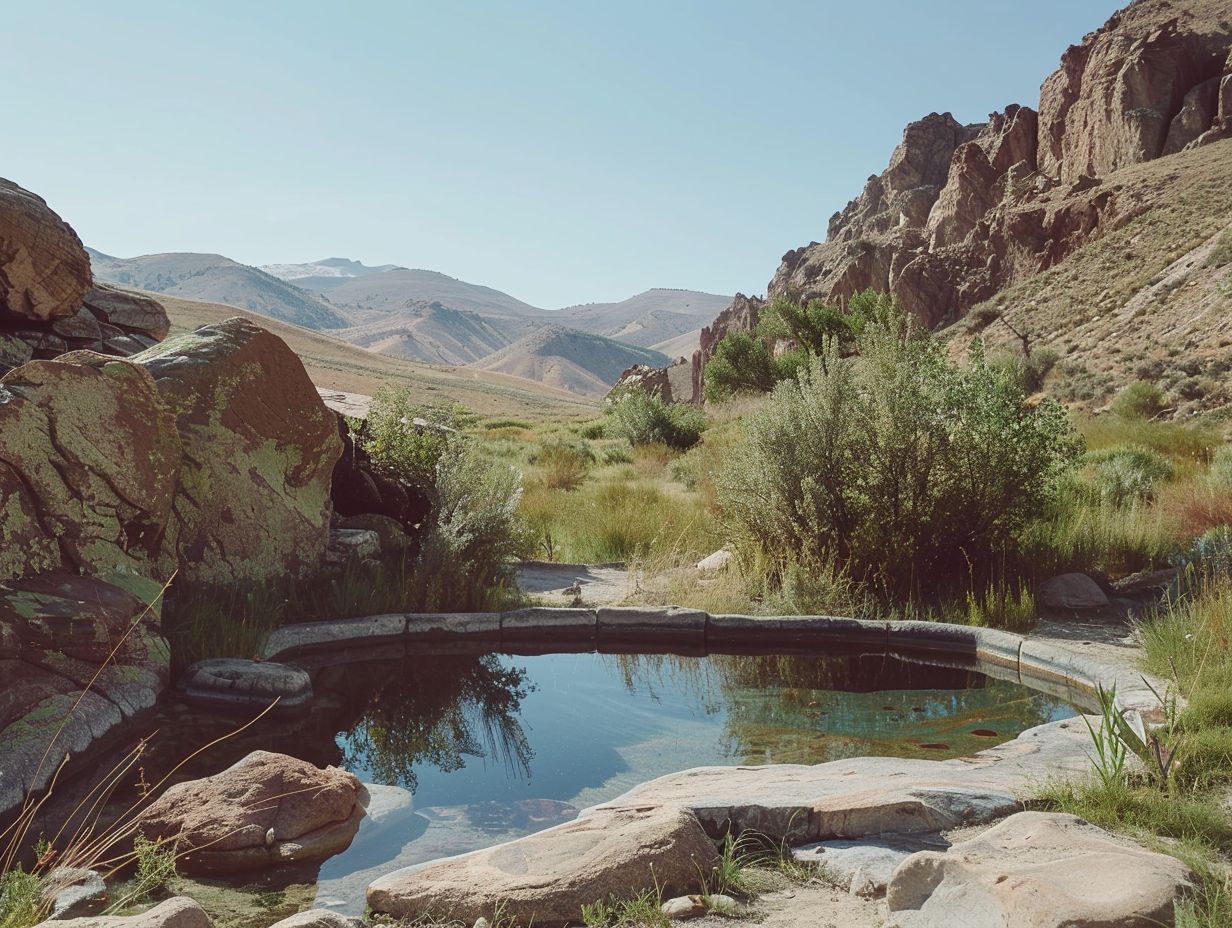
It is imperative to ensure that correct camping permits are obtained and that all regulations, including any associated fees and reservation requirements, are fully understood before camping within the National Park System.
Securing the necessary permits typically entails visiting the official park website or contacting the park ranger station well in advance.
Fees for permits may vary depending on the specific location and the duration of the camping stay, emphasising the importance of consulting the current fee schedule. Reservations can often be made online through the park’s official reservation system or by contacting the park office directly.
Adherence to these regulations not only facilitates a seamless camping experience but also contributes to the preservation of the natural beauty and integrity of these protected areas.
How to Prepare for Camping Near Hot Springs
Thorough preparation for camping in the vicinity of hot springs involves the development of a detailed packing inventory, adherence to safety protocols, and strict observance of Leave No Trace principles aimed at environmental preservation.
1. Packing List for Hot Springs Camping
When preparing a packing list for hot springs camping, it is important to take into account various factors such as the type of campsite, the necessity of a tent or caravan, and the amenities and resources available.
If individuals are planning to visit a developed campsite that offers designated pitches and facilities, it is advisable to prioritise essentials such as a sturdy tent, sleeping bags, camping chairs, and cooking equipment.
For those who choose a more primitive camping experience, it is essential to remember to bring along a water purification system, a headtorch, and durable walking boots.
To fully enjoy the hot springs, it is recommended to pack items such as a swimming costume, towel, and water shoes.
Additionally, it is crucial to include suncream, insect repellent, a first-aid kit, and an ample supply of snacks to sustain energy levels throughout outdoor activities.
2. Safety Precautions
Safety precautions for camping near hot springs entail readiness for hiking, encounters with wildlife, and managing weather fluctuations.
It is imperative to ascertain the availability of proper hiking equipment, including durable footwear, a comprehensive map of the area, and an ample supply of water and snacks for the expedition.
When encountering wildlife, it is essential to consistently maintain a safe distance, refrain from feeding any animals, and correctly store food items to avert any undesirable interactions.
Remaining well-informed about weather forecasts and packing sufficient layers of clothing are vital measures for safeguarding oneself against abrupt shifts in temperature while engaging in camping activities near hot springs.
3. Leave No Trace Principles
It is imperative to adhere to Leave No Trace principles in order to safeguard the wilderness, forests, and overall environment within the National Park System. These principles act as a crucial guideline for conscientious outdoor enthusiasts seeking to minimise their impact on nature.
Central to this approach is thorough pre-trip planning and preparation for camping excursions. This entails familiarising oneself with the regulations of the intended destination, packing essential supplies, and ensuring suitable gear for the terrain.
Effective preparedness can help prevent unwarranted harm to the environment and wildlife, fostering a sustainable outdoor experience for both present individuals and future visitors.
Top Hot Springs Camping Spots in the US
The United States boasts several premier hot springs camping locations, such as Yellowstone National Park, Big Bend National Park, and Olympic National Park. Each of these destinations provides distinctive experiences and stunning natural landscapes.
1. Yellowstone National Park, Wyoming
Yellowstone National Park in Wyoming is renowned for its rich thermal water resources, picturesque trails, and diverse wildlife, making it an exceptional destination for both RV and tent campers.
Visitors have a plethora of camping options to choose from within the park, ranging from well-equipped campgrounds with facilities like toilets and picnic tables to more primitive backcountry camping for those seeking an authentic wilderness experience.
Yellowstone also boasts numerous natural hot springs, including the popular Mammoth Hot Springs and the scenic Boiling River.
Activities within the park encompass hiking along the geothermal features, wildlife observation, fishing in the pristine rivers and lakes, and participating in ranger-led programmes. Camping permits are obligatory and can be acquired through the park’s official website.
The weather in Yellowstone can be unpredictable, with summer temperatures fluctuating between 70-80°F during the day and dropping to 30-40°F at night. Notable attractions that should not be missed include the iconic Old Faithful geyser, the Grand Canyon of the Yellowstone with its magnificent waterfall, and the Grand Prismatic Spring, renowned for its vibrant hues.
2. Big Bend National Park, Texas
Big Bend National Park in Texas presents a range of campsites and wild camping options, complemented by historic sites and scenic drives that highlight the natural splendour of the park.
Guests visiting Big Bend have the opportunity to enjoy the therapeutic hot springs situated throughout the park, offering a peaceful way to relax following a day of exploration. The park’s distinct geology, featuring elaborate canyons and striking rock formations, presents magnificent photographic opportunities for nature enthusiasts.
Explorers can participate in ranger-led tours to gain a deeper understanding of the park’s history and diverse wildlife. Making sure not to miss the opportunity to witness breathtaking sunsets over the Chisos Mountains or take part in stargazing under the clear night skies that establish Big Bend as a haven for astronomy enthusiasts.
3. Olympic National Park, Washington
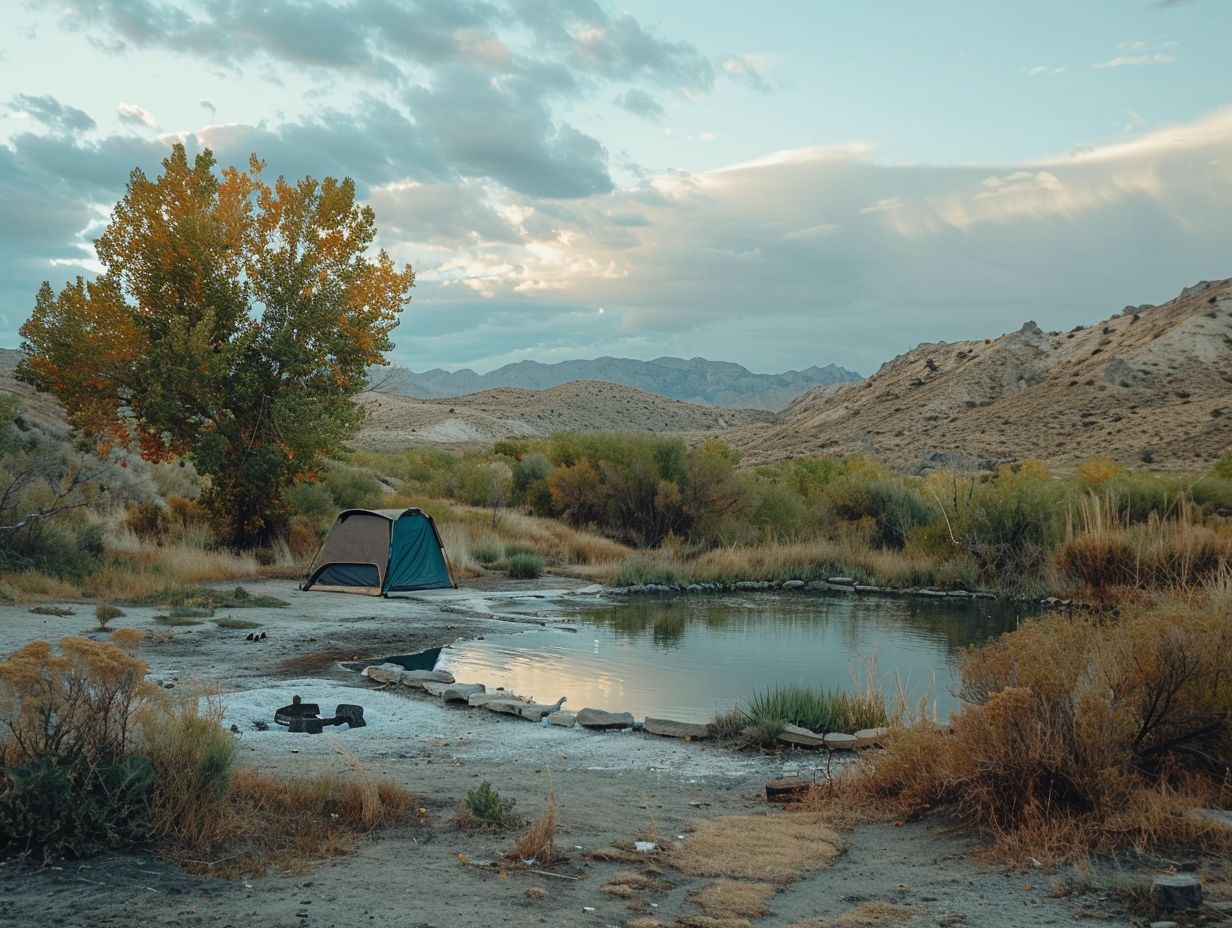
Olympic National Park in Washington is known for its verdant forests, diverse wildlife, and extensive network of hiking trails, all enhanced by a comprehensive selection of camping facilities.
A noteworthy aspect of camping within Olympic National Park is the opportunity to relax in its natural hot springs after a day of exploration. These hot springs provide a revitalising experience amidst the park’s breathtaking scenery.
Aside from camping, visitors have the option to engage in various activities such as birdwatching, fishing, and kayaking. For individuals seeking a deeply engaging experience, selecting a camping location near the coast allows for an immersive night’s rest under the stars, accompanied by the calming sounds of the waves.
For an optimal camping experience, it is advisable to schedule your visit during the shoulder seasons of spring and autumn. This choice enables you to avoid large crowds and enjoy more moderate weather conditions.
Things to Do While Camping Near Hot Springs
Whilst camping near hot springs, there are numerous activities that can be enjoyed, such as:
- Immersing in the thermal waters
- Taking part in hiking trips
- Observing wildlife
- Simply relaxing amidst the natural environment
1. Soak in the Hot Springs
Indulging in the thermal water of hot springs is a customary and relaxing activity that is often complemented by bathhouses offering various amenities.
The advantages of soaking in hot springs are manifold. The warm water enriched with minerals can aid in muscle relaxation, enhance circulation, and alleviate stress. Natural hot springs are typically situated in picturesque outdoor settings, providing a serene atmosphere amidst the beauty of nature.
Conversely, bathhouses offer a more controlled environment equipped with amenities such as saunas, steam rooms, and massage services. To optimise the benefits of your soaking experience, it is advisable to maintain hydration, limit soaking time to approximately 20 minutes, and adhere to any rules or guidelines stipulated by the hot spring establishment.
2. Hiking and Exploring the Surrounding Area
Engaging in hiking and exploring the adjacent trails, mountains, and forests presents an opportunity to establish a connection with nature and appreciate the beauty of the surrounding landscape.
The region features numerous well-known hiking trails, including the scenic Summit Trail that winds through verdant forests and provides awe-inspiring panoramic vistas from the mountain peaks.
To ensure a safe hiking experience, it is essential to be well-prepared. This includes bringing an ample supply of water, a map for navigation, and informing a trusted individual of your itinerary before commencing the hike.
It is advisable to remain vigilant for potential wildlife encounters, as the area is inhabited by a diverse range of species, such as black bears, deer, and various birds. Exploring hidden treasures like serene waterfalls, ancient geological formations, and picturesque viewpoints along the journey should not be overlooked.
3. Wildlife Viewing and Birdwatching
Wildlife viewing and birdwatching are activities that offer substantial rewards, providing campers with the opportunity to observe a diverse range of species in their natural forest environments, often easily accessible via scenic drives.
In the vicinity of hot springs, visitors may also have the chance to encounter a variety of wildlife and birds attracted to the warm waters. Common sightings include deer, elk, black bears, as well as various bird species such as bald eagles, ospreys, and herons.
To enhance the viewing experience, it is advisable to bring binoculars for a closer observation and to consider early mornings or evenings as the optimal times for wildlife observation, when animals tend to be more active. It is important to maintain a respectful distance from these creatures and observe them quietly to prevent any disturbance to their natural behaviours.
4. Relaxing and Enjoying Nature
An integral aspect of the camping experience involves taking the opportunity to unwind and appreciate the natural environment surrounding the hot springs.
This respite serves as a valuable escape from the daily routine, allowing individuals to detach from the incessant demands of technology and fully immerse themselves in the serene beauty of the outdoors.
Engaging in activities such as hiking along picturesque trails, observing birds in their natural habitat, or enjoying a picnic by the river can foster mindfulness and contribute to a reduction in stress levels. The natural world exerts a calming influence on the mind, cultivating a sense of peace and tranquillity.
Allocating a moment to simply sit and absorb the sounds of the forest or feel the gentle warmth of the sun on one’s skin can serve to rejuvenate the spirit and cultivate a deeper connection with the natural world.
Frequently Asked Questions
Are there any safety precautions to keep in mind when camping near hot springs?
Yes, it is important to follow safety precautions when camping near hot springs. These include staying hydrated, avoiding hot springs that are too hot, and following all posted rules and regulations. It is also important to be aware of potential wildlife in the area and take necessary precautions.
Can I build a fire when camping near hot springs?
It depends on the specific area and any fire restrictions in place. It is important to check with local authorities before building a fire. If fires are permitted, make sure to properly extinguish it when finished and follow all guidelines to prevent wildfires.
Is it necessary to make reservations for camping near hot springs?
It is always a good idea to make reservations when camping, especially near hot springs. Some campsites may have limited availability and may require advanced reservations. It is also important to check if there are any fees or permits required for camping in the area.
How can I find the best camping spot near hot springs?
Research and planning are key to finding the best camping spot near hot springs. Look for campgrounds or dispersed camping areas that are close to the hot springs and have good reviews. Additionally, consider the amenities and activities offered at the campsite to find the best fit for your needs.
What are some other activities to do when camping near hot springs?
In addition to soaking in the hot springs, there are many other activities to do when camping in the area. These can include hiking, fishing, birdwatching, stargazing, and exploring nearby attractions. It is always a good idea to have a backup plan in case the hot springs are too crowded or unavailable.
